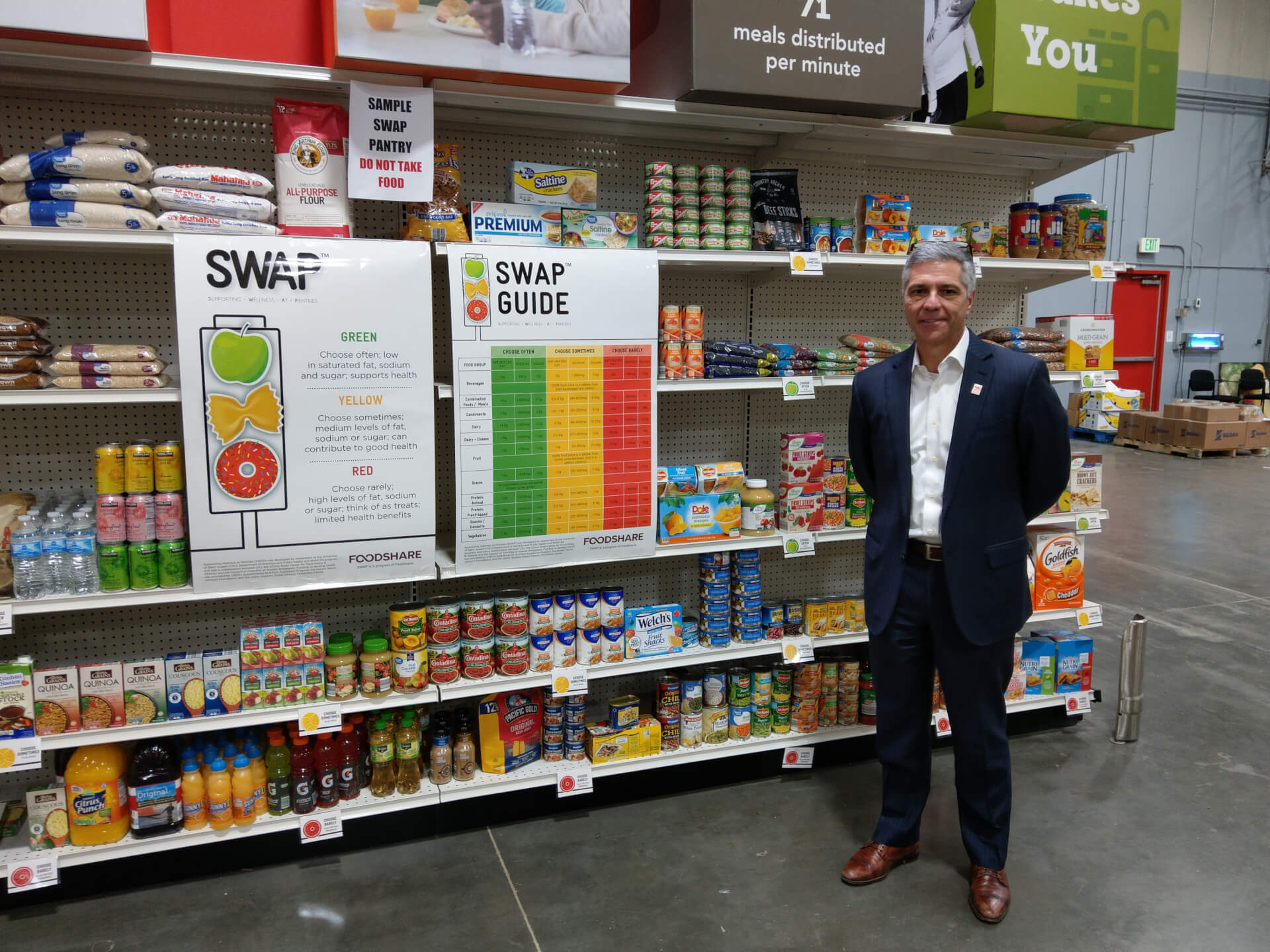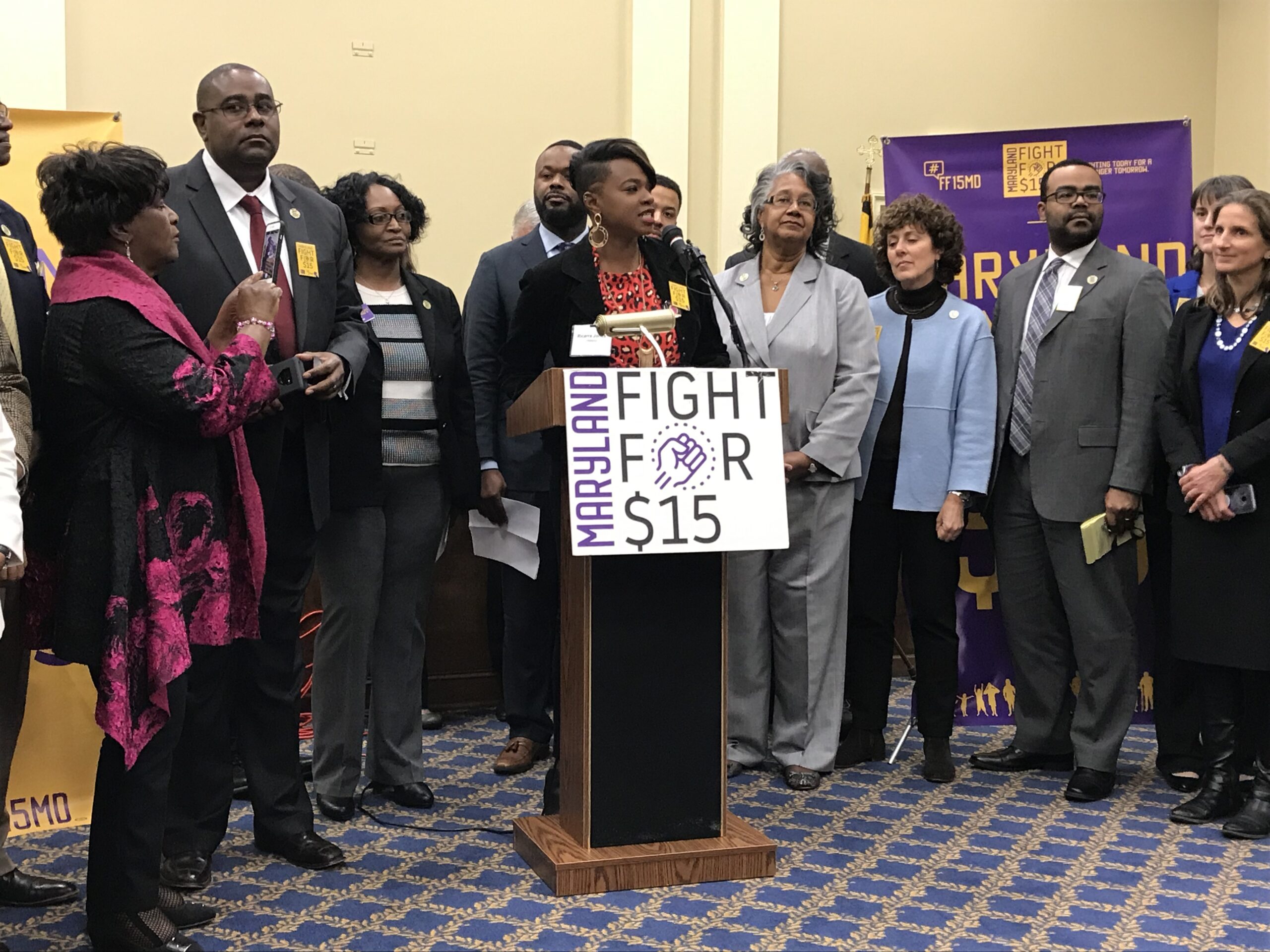All About the Hunger Industry

Second in a series
There is something missing on the website for The Partnership to End Childhood Hunger in Maryland.
Under the dropdown menu of “Goals and Progress” the organization lists School Breakfast, After School, Summer, Food Supplements, and Women, Infants and Children (WIC). In every case, save one, the goal is to deliver food either in the form of meals or groceries to children.
But the most obvious solution, in the minds of many advocates for the poor – to raise the minimum wage so people will have money to buy food – is nowhere to be found.
Why?
The Governor’s Office for Children, which at one time co-chaired the Partnership, referred calls to the Maryland State Department of Education, which referred calls to an organization called No Kid Hungry Maryland, which could not be reached for comment.
But part of the answer may be found in the Form 990 that nonprofits like the Maryland Food Bank must file with the IRS. The salaries of their top employees in 2017, the last year for which information is available, ranged from a low of $174,893 to that of the President, Carmen Del Guercio, which was $291,822.

While those salaries may appear generous, they pale in comparison with the compensation for the Food Bank’s parent organization, Feeding America. The most recent available 990 from 2017 shows the then CEO, Diana Aviv, being paid $860,909. Aviv resigned the following year.
It might appear unseemly to pay people so generously for helping the poor, but that may point to a larger problem: charity has become an industry.
Aviv, for example, headed a charity called Independent Sector before she joined Feeding America. Salaries depended on how well the charity’s investments and donations were doing and Aviv remembered the hard times there.
“The downturn was really sad,” she told Bloomberg News. “Agencies didn’t have resources. Employees were going without pay. It was terrible.”
And indeed, Aviv’s salary of $680,000 in 2013 dwindled to $556,000 in 2015. At the same time, her husband, Sterling Speirn, had recently headed the WK Kellogg Foundation, where he earned $905,000. Speirn retired from the Kellogg Foundation in 2012 when he turned 65.
Speirn, himself was something of a philanthropy wunderkind. Before he was hired by Kellogg in 2005, he had spent 15 years at the Peninsula Community Foundation in California.
In a glowing article in the Philanthropy Journal News he was lauded as “philanthropic innovator.” His innovation apparently was to take Peninsula Community Foundation from $60 million in assets in 1990 to $611 million in assets in 2005. And when he got the offer from Kellogg, he sounded like a minor league coach called up to the majors.
“It had always been a back-of-the-mind fantasy,” Speirn told a reporter, “to work with and lead a big-league, major private foundation.”
What the husband and wife team of Aviv and Speirn illustrate is that philanthropy is a career choice like going into advertising or becoming a hedge fund manager. In philanthropy the pay is good, the work interesting and it carries with it the aura of thoughtfulness and benevolence.
And while high salaries at charities may seem incongruous, it may not be a bad thing. Aviv, for example, managed a $2 billion organization at Feeding America, which is doubtlessly a challenging occupation. Presumably high salaries will attract competent people.
‘It’s profitable for everybody’
But it also highlights the curious omission in the goals of charities that are feeding the poor. Why not campaign for higher incomes for the poor so they can feed themselves?
The answer may be that if the poor can feed themselves, organizations like The Maryland Food Bank, with its good wages for the people who run it, might go out of business. Or as Andrew Fisher, who spent 17 years leading the Community Food Security Coalition, explained, “there are few incentives to end hunger because it’s profitable for everybody.”
Which brings us back to The Partnership to End Childhood Hunger In Maryland.
What is striking about The Partnership’s list of members is that Walmart – a huge corporation controlled by billionaires that pursues a relentless policy of paying starvation wages — Walmart would be very hard to ignore. And yet, by including Walmart as a member of The Partnership, that is exactly what its fellow members like the Maryland Foodbank, the Capitol Area Foodbank, Catholic Charities and the State of Maryland are doing.
And at the same time that Walmart’s employment policies are creating the childhood hunger that the other Partnership members decry, it is having its labor costs subsidized by taxpayers. Walmart is the largest “food stamp” firm in Maryland.
[Meet the Food Stamp Firms of Maryland]
But in addition to food stamps, its employees are so poorly paid that they qualify for other government programs such as Section 8 housing, free school lunches and federal tax credits.
In 2013 the Democratic staff at the U.S. House Committee on Education and The Work Force decided to investigate exactly what Walmart’s labor policies were costing taxpayers. Using as its test case a Walmart store in Wisconsin, the committee estimated that a single store employing 200 people cost taxpayers approximately $420,000 per year.
To put that in some kind of perspective, Rob Walton one of the multi-billionaire owners of Walmart, decided in 2012 to race his vintage Shelby Dayton Cobra Coupe at the Laguna Seca track in Salinas, Calif. When he lost his brakes, Walton smashed the car that had an estimated value of $15 million. The car would have paid 7,200 employees better wages at 36 Walmarts for a year.
But Fisher, the former Community Food Security Coalition leader who wrote a book called “Big Hunger,” describes why food banks and hunger advocacy groups find Walmart so enchanting. Through its charitable arm, the Walmart Foundation, the company has showered money on all kinds of anti-hunger causes.
A few of Fisher’s examples suffice:
-From 2010 to 2013 the foundation handed Feeding America $33 million;
-It has donated more than 180 trucks and refrigerated trailers to food banks;
-It provided $15.5 million to seven national organizations to support free meal and nutrition education programs.
Fisher explains that “While on the surface Walmart’s use of its charitable giving to build its reputation shares many similarities with that of other large corporations, at a closer look the company appears to have been much more explicit in the links between its giving and its profit motives.”
In Los Angeles, for example, Fisher says donations from the Walmart Foundation were only $205,000 in 2009 “but increased to $1.05 million in 2010 and $1.38 million in 2011 when it filed its application for a permit for its first store in the City of Los Angeles.”
‘The halo effect’
While these donations give Walmart what Fisher calls a “halo effect,” there are other benefits. “It then encourages its employees to go on food stamps,” Fisher said, “or to go to food banks to keep its wage costs low.”
In addition, redeeming food stamps is big business for Walmart. A 2013 study found that it accounted for 18% of all food stamp spending in the country. And in 2017, when the Trump administration announced plans to tighten food stamp spending, Fortune magazine calculated Walmart might lose $1.2 billion per year, because Americans would have less money to buy groceries.
The choice for organizations supposedly fighting hunger seems straightforward: Either join with companies like Walmart and give away food to poor people while collecting a good salary – or view child hunger as a symptom of an economic system gone awry and fight to change the system.
Read the whole series:
Part one: Meet the Food Stamp Firms of Maryland, plus Bum Blockade: How We Got the Food Stamp Data
Today’s sidebar: The Tax Deduction Recipe That Feeds Hunger
Part three: Measuring Hunger: One Size Does Not Fit All, plus Calculating How to Go Hungry
Part four: The No Man’s Land of Childhood Hunger
Part five: When the Floor Becomes the Ceiling
Part six: There’s No Wage Like the Minimum Wage
Part seven: The Volunteer Army Trying to Fight Hunger
***
Enjoy reading Maryland Matters?
Get our morning news roundup in your inbox. Free.
Click here to sign up.


 Creative Commons Attribution
Creative Commons Attribution